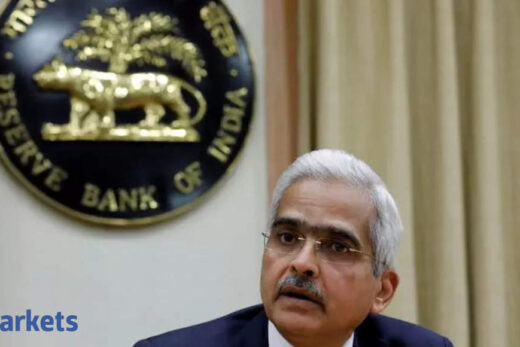Mumbai: The RBI is expected to follow a divergent strategy when it comes to interest rates, which are at a historic low and dealing with the Rs 10 lakh crore of surplus liquidity sloshing in the banking system. In response to the pandemic, the central bank had reduced the (repo) rate at which it lends to banks to a low of 4% and also flooded banks with funds to ensure that they kept lending. Now with macroeconomic indicators improving the central bank may like to have a better grip on liquidity even as it continues to keep rates low and reassure markets that there will be no shortage of funds.
Banks are unanimous in their view that the central bank will adopt a status quo policy and continue to hold the repo rate at 4%. It is also widely expected that the central bank will continue to maintain an accommodative stance. However, many are now veering to the view that the central bank may absorb some of the surplus liquidity to begin normalisation of the pandemic stimulus.
The next meeting of the MPC is scheduled during October 6-8, 2021. Incidentally, in the previous policy, MPC member Jayanth Varma had said that the reverse repo rate at 3.35% was too low and he was not in favour of it. Last week, the RBI surprised markets by fixing the seven-day reverse repo cut off at 3.99%, which was higher than expected and very close to the policy rate of 4%.
The move by RBI has prompted Citi to forecast that the central bank will hike its reverse repo rate next week (rate at which the RBI borrows from commercial banks). If it does so, the RBI will be the first central bank to signal rollback of the emergency measures during Covid.
According to Bank of Baroda MD & CEO Sanjiv Chadha, there are two parts to the monetary policy stimulus — rates and liquidity. “You would expect that the liquidity piece will start getting normalised first. Change in the rate cycle is a few quarters ahead. The distortions in risk pricing due to liquidity surplus should get sorted and we should start seeing credit risk that way it would be in normal times,” said Chadha.
What this means is that a reduction in liquidity will not make any change to the top-rated borrowers. It is also unlikely that any lender would touch home loan rates, which are seen as the safest loans. However, the gap between what the top-rated borrowers and the lesser rated ones pay may widen.
For retail borrowers, the good news is that banks have actually reduced rates last week in a bid to grow market share when home buying picks up during the festive period. The reason why lenders are keen on growth is that the corporate investment cycle is yet to pick up. “Even today, capacity utilisation is about 70% and it’s only when it moves up to 80% that you get a serious round of investments. We are seeing progress in going beyond green shoots. For this to gather momentum and become a full-fledged revival of the investment cycle we might be a few months away,” said Chadha. He added that investment was being seen in brownfield projects and in companies that have gone through an ownership change. There was also some fresh capacity in renewable energy and electric vehicles.




